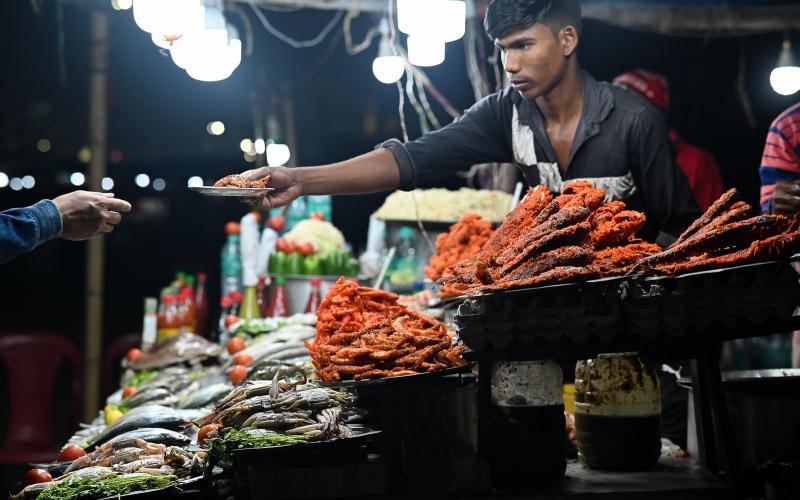
There’s been a profound shift in dietary habits observed across India. A recent WorldFish and Indian Council of Agricultural Research study on fish consumption patterns shows that from 2005 to 2021 there was an 81.43% increase in per capita fish consumption in India, along with a 32% growth in the fish-consuming population. The attention this study has received in Indian media is well-deserved for it touches upon a subject with huge implications for policy settings and not only underscores the crucial role of aquatic foods in bolstering nutrition and livelihoods but also amplifies the need for sustainable aquatic food production practices.
The surge in fish consumption in India is intrinsically linked to the rising middle class, whose expanding awareness and refined palates demand more nutritious food options. This shift not only underscores the importance of sustainable fisheries and aquaculture to meet these new preferences but also reflects a broader trend of dietary evolution towards health and sustainability.
At its core, this trend towards higher fish consumption in India mirrors global trends. Fish, and aquatic foods in general, offers a myriad of health benefits, brimming with essential micronutrients, vital proteins, and omega-3 fatty acids. They also produce a fraction of the CO2 emissions when compared with traditional land-based food systems.
Navigating the Challenges of Aquatic Food Production
With this rising demand, the issue of ecological degradation looms large. This encompasses a variety of threats, including water pollution, overfishing leading to the depletion of native species, and the degradation of vital habitats like mangroves. Compounding these challenges is the unsustainable reliance of many fish farms on wild-caught fish for feed.
With aquaculture production expected to surpass 105 million tons by 2029, outpacing the capture sector by 10 million tons, there is an urgent need to balance this surge in demand while simultaneously safeguarding aquatic ecosystems' health. This requires a fundamental shift towards sustainability, one that can safeguard the long-term viability of aquaculture industries, not only within India but globally.
However, challenges often breed innovation. The surge in consumption opens the door to opportunities for adopting and scaling up sustainable practices aquaculture techniques such as the In-Pond Raceway System (IPRS), which recirculates water within ponds, conserving resources while optimizing fish growth, and integrated multi-trophic aquaculture (IMTA), which integrates the farming of different species to balance the ecosystem, are pioneering sustainable fish farming. While research into selective breeding and improved feed composition are paving the way for a more sustainable future, there is the parallel need to ensure effective fisheries management that includes stock replenishment and sustainable harvesting practices.
Securing the Future of Sustainable Aquaculture
Investment in sustainable aquaculture practices is a cornerstone of the blue economy and comes with a promise of substantial benefits. It holds the key to securing the livelihoods of millions of small-scale fishers and aquaculturalists by providing them with a stable income while conserving biodiversity.
However, realizing this vision requires concerted efforts. Policymakers must create regulations that incentivize sustainable practices, while researchers and businesses must drive innovation.
Additionally, investment disparities in the blue economy must be rectified. The aquatic foods sector, currently receives a mere fraction of industry investments, USD 585 million or less than 1% of its industry size. This pales in comparison to sectors like offshore wind energy, which amounts to USD 3.1 billion or 10% of its current industry size. We must prioritize aquatic food systems, steering capital to support research, development, and scaling in this critical area.
So, why does it matter that more people than ever in India are eating fish?
Fish consumption trends in India and globally signal a need for change. Aquatic foods are both a malnutrition and a climate solution, but to harness their full potential and to ensure shared prosperity, we must ensure they are produced sustainably, supported by significant investment and a collective commitment to nurturing our blue planet.
It’s not just about meeting today's needs, it's about ensuring a healthy future for generations to come.
